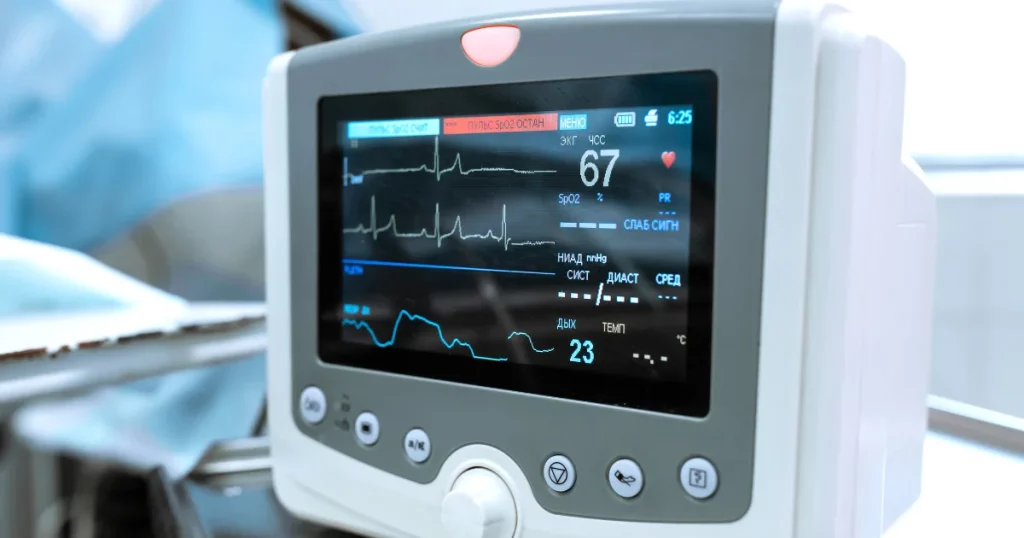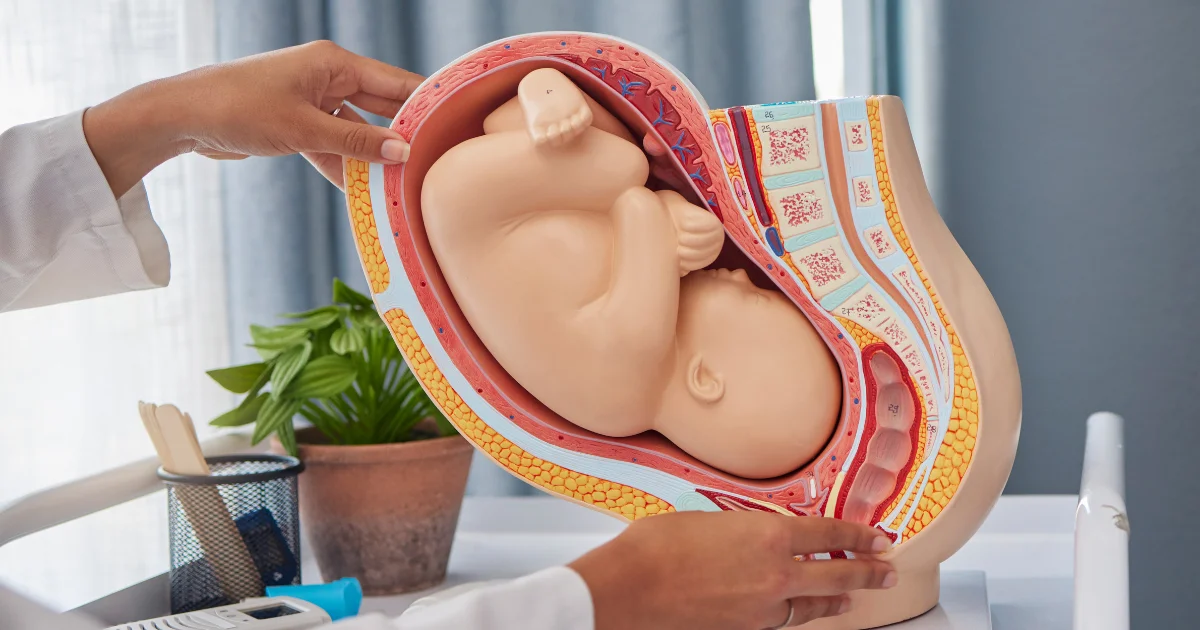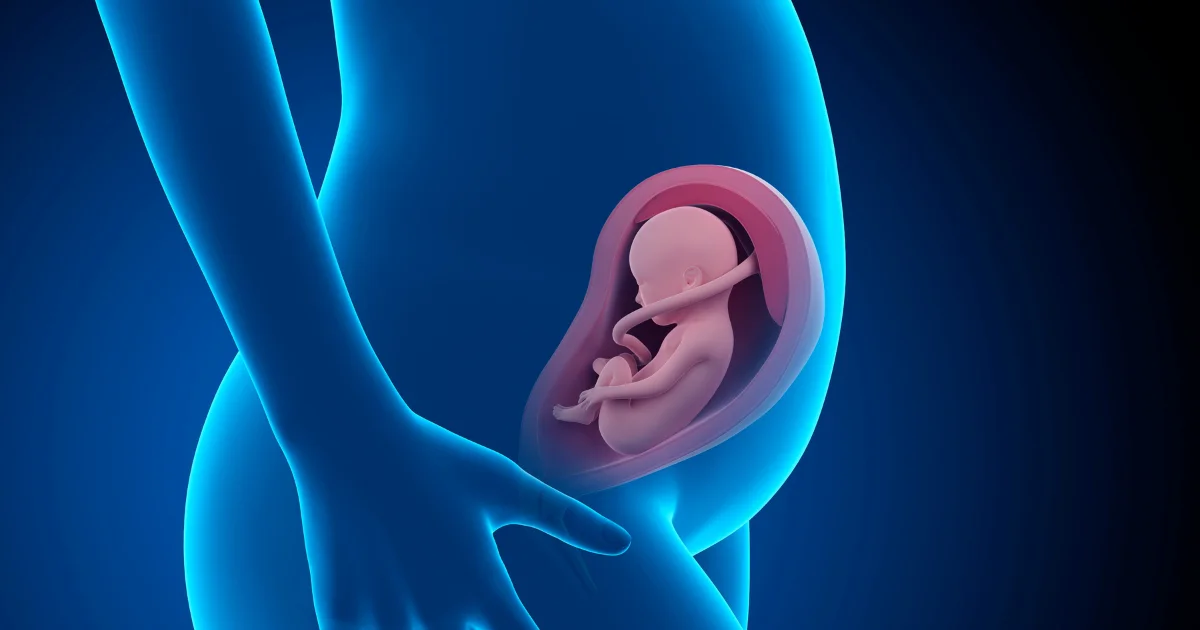When your patient is in a critical situation, every heartbeat, every breath, and every subtle change can tell a critical story. But medical patient monitors can transform these subtle signals into life-saving insights. Consider this: Patient monitors are the most useful medical device, translating the language of vital signs into actionable data for healthcare providers. In a busy hospital room or a quiet clinic, these devices stand as silent sentinels, providing a real-time window into the body’s symphony.
Patient monitors, including various parameters like heart rate, blood pressure, temperature, respiratory rate, and oxygen saturation, are the frontline observers of our physiological health. They don’t just display numbers; they tell information about health, recovery, and, at times, the urgency of intervention. Join us on a journey to discover these electronic storytellers, understand their language, and appreciate the profound impact they wield in the hands of skilled healthcare professionals.
Table of Contents
Understanding the Medical Patient Monitors
Patient monitors stand as integral tools, bridging the gap between subtle physiological changes and informed medical intervention. These electronic marvels, encompassing a range of vital parameters, play a pivotal role in continuously assessing and displaying the health status of patients. Let’s discover the significance of patient monitors, exploring their key components and the valuable insights they provide to healthcare providers.
I. Heart Rate (HR)
- Measurement and Normal Range: The heart rate, or HR, recorded in beats per minute, serves as a fundamental indicator of cardiovascular health. A normal range typically falls between 60 and 100 beats per minute, showcasing the efficiency of the heart’s pumping action.
- Arrhythmias Unveiled: Medical Patient monitors adeptly capture irregularities in heart rhythm, known as arrhythmias, providing a real-time visual cue to healthcare professionals. Understanding these deviations allows for timely intervention and tailored treatment strategies.
II. Blood Pressure (BP)
- Measuring Blood Pressure: Blood pressure, indicated by two values (systolic and diastolic), reflects the force of blood against arterial walls. The normal range typically hovers around 120/80 mmHg.
- Systolic and Diastolic Dynamics: Patient monitors present the dynamics of systolic pressure (during heartbeats) and diastolic pressure (between heartbeats), offering valuable insights into cardiovascular health.
III. Temperature (TEMP)
- Temperature Measurement: Medical Patient monitors gauge body temperature, with the normal range around 98.6°F (37°C). Monitoring temperature variations aids in detecting fever or hypothermia.
- Fever and Hypothermia Insights: An elevated temperature signifies fever, while a below-normal reading indicates hypothermia. These indications guide healthcare providers in understanding the body’s response to various conditions.
IV. Respiratory Rate (RR)
- Understanding Respiratory Rate: Respiratory rate measures the number of breaths per minute. The normal range is typically 12 to 20 breaths per minute.
- Tachypnea and Bradypnea: Patient monitors unveil deviations such as tachypnea (rapid breathing) or bradypnea (slow breathing), offering clues to respiratory health and potential issues.
V. Oxygen Saturation (SpO2)
- Measuring Oxygen Saturation: SpO2 reflects the percentage of oxygen in the bloodstream, with a normal range of 95% to 100%. Patient monitors track this vital parameter continuously.
- Hypoxemia Unveiled: A drop in oxygen saturation, known as hypoxemia, is a critical alert displayed by patient monitors, necessitating prompt investigation into its potential causes.
VI. Waveforms on the Monitor
Patient monitors display various waveforms, including ECG curves and SpO2 trends. Interpreting these waveforms requires specialized medical training and expertise.
VII. Key Reminders for Empowered Health
It’s crucial to remember that this guide offers foundational knowledge about medical patient monitors. For personalized insights, consultation with healthcare professionals is indispensable. Interfering with medical equipment or altering monitor settings without expertise is strongly discouraged. Embrace the collaborative journey between technology and healthcare expertise, ensuring that patient monitors continue to serve as invaluable allies in the pursuit of well-being.
Also read: How to Read a Hospital Patient Monitor: A Step-by-Step Guide
Types of Medical Patient Monitors
Various patient monitors are used for specific needs, providing healthcare professionals with a comprehensive toolkit for monitoring vital signs and ensuring patient well-being. Let’s dive into the types of patient monitors, each designed to offer unique insights into different aspects of a patient’s physiological status.
I. Multiparameter Monitors
- Overview: Multiparameter monitors, also known as multi-parameter medical patient monitors or vital signs monitors, are versatile systems that simultaneously track multiple vital signs. These typically include heart rate (HR), blood pressure (BP), temperature (TEMP), and oxygen saturation (SpO2).
- Application: Widely utilized in various medical settings, multiparameter monitors offer real-time, continuous monitoring of a patient’s vital signs, providing a holistic view of their physiological status.
II. Electrocardiogram (ECG) Monitors
- Overview: ECG monitors focus specifically on capturing and displaying the electrical activity of the heart. These monitors produce ECG waveforms that represent the heart’s rhythm and help identify any abnormalities.
- Application: Commonly employed in cardiology and critical care units, ECG monitors play a crucial role in diagnosing and managing cardiac conditions, ensuring prompt intervention in case of arrhythmias or other heart-related issues.
III. Pulse Oximeters
- Overview: Pulse oximeters are specialized monitors designed to measure the oxygen saturation (SpO2) levels in a patient’s blood. They often clip onto a patient’s fingertip, earlobe, or other accessible areas.
- Application: Widely used in various clinical settings, pulse oximeters are particularly valuable in monitoring patients with respiratory conditions, during surgery, or in emergencies where oxygen levels are critical.
IV. Blood Pressure Monitors
- Overview: Blood pressure monitors, also known as sphygmomanometers, are dedicated to measuring the force of blood against arterial walls. They typically include both manual and automatic variations.
- Application: Essential in routine patient care and various medical procedures, blood pressure monitors aid in diagnosing hypertension, and hypotension, and guiding interventions to maintain cardiovascular health.
V. Temperature Monitors
- Overview: Temperature monitors focus on tracking a patient’s body temperature. These monitors use various methods, including oral, tympanic (ear), or infrared technologies.
- Application: Critical in detecting and managing conditions related to body temperature, these monitors find application in routine clinical assessments, post-surgical care, and monitoring patients with fever or hypothermia.
VI. Capnography Monitors
- Overview: Capnography monitors measure the concentration of carbon dioxide (CO2) in a patient’s exhaled breath. They provide insights into respiratory efficiency and help in detecting abnormalities.
- Application: Widely used in anesthesia, critical care, and respiratory therapy, capnography monitors assist in assessing ventilation, ensuring proper gas exchange, and identifying potential respiratory issues.
VII. Fetal Monitors
- Overview: Fetal monitors are specialized devices for monitoring the health and well-being of a developing fetus during pregnancy and childbirth. They often include technologies such as Doppler ultrasound and tocodynamometry.
- Application: Used in obstetrics and gynecology, fetal monitors provide essential information about fetal heart rate, contractions, and other parameters, guiding healthcare professionals in ensuring a safe delivery.
As technology continues to advance, the landscape of patient monitors evolves, contributing to enhanced patient care, early detection of abnormalities, and improved clinical outcomes. Each type of monitor plays a unique role in the comprehensive care and monitoring of patients across diverse healthcare scenarios.
Explore our 2 best-selling medical patient monitors:
Components of a Patient Monitor
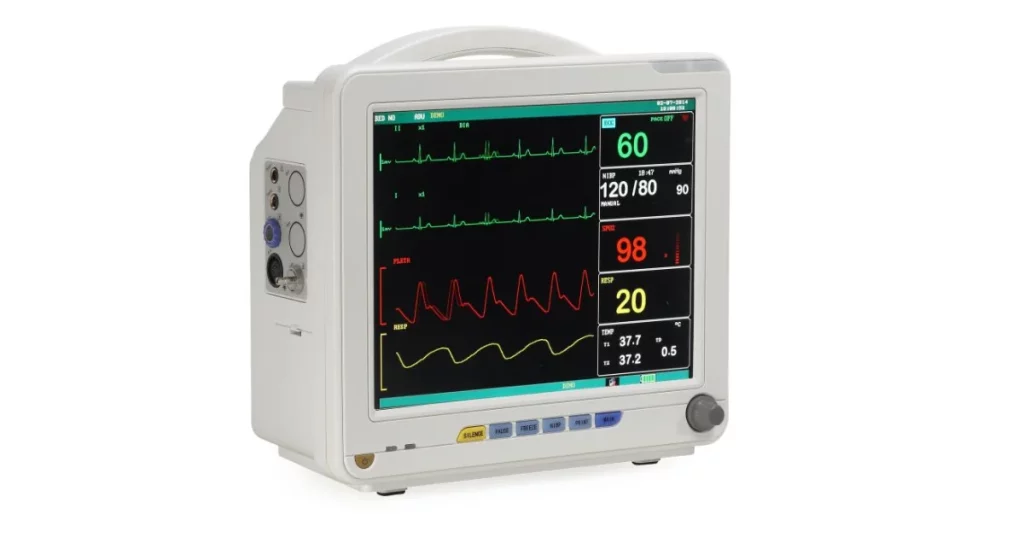
Medical patient monitors, sophisticated devices central to modern healthcare, are equipped with various components that work seamlessly to capture, process, and display critical physiological information. Here’s a closer look at the key components that make up these vital medical instruments:
1. Display Screen
The display screen serves as the interface where healthcare professionals can view real-time data. It presents information in a clear and accessible format, allowing quick interpretation of vital signs.
2. Input Devices
Input devices, such as touchscreens or physical buttons, enable healthcare professionals to interact with the monitor. They provide a means for configuring settings, navigating menus, and accessing different functionalities.
3. Central Processing Unit (CPU)
The CPU is the brain of the patient monitor, responsible for processing data received from various sensors. It performs calculations, executes algorithms, and ensures accurate and timely information is displayed on the screen.
4. Monitoring Parameters
Medical patient monitors are designed to track specific parameters critical to assessing a patient’s health. These parameters include heart rate (HR), blood pressure (BP), temperature (TEMP), oxygen saturation (SpO2), respiratory rate (RR), and more.
5. Sensors
Sensors are integral to collecting physiological data. Different sensors are employed to measure specific parameters, such as ECG electrodes for heart activity, a blood pressure cuff for BP, a temperature probe for TEMP, and a pulse oximeter for SpO2.
6. Alarms
Alarms are crucial components for patient safety. They alert healthcare providers when monitored parameters deviate from the preset ranges, indicating potential issues or emergencies requiring attention.
7. Power Supply
Patient monitors are equipped with a reliable power supply, often a combination of mains electricity and battery backup. This ensures uninterrupted monitoring, even in the event of power fluctuations or outages.
8. Networking Capabilities
Many modern patient monitors feature networking capabilities, allowing them to connect to hospital information systems (HIS) or electronic health records (EHR). This enables seamless data sharing and integration into the broader healthcare infrastructure.
9. Trending and Recording Features
Patient monitors often include features for trend analysis and data recording. This allows healthcare professionals to track changes over time, aiding in long-term patient management and retrospective analysis.
10. Mounting and Mobility
The physical design of medical patient monitors includes considerations for mounting on walls, integration into bedside carts, or placement on rolling stands. This mobility ensures flexibility in monitoring patients across different settings within healthcare facilities.
11. User Interface
The user interface encompasses the overall design, layout, and accessibility of information on the monitor. An intuitive and user-friendly interface is essential for efficient operation by healthcare professionals.
12. Printer or Data Output
Some patient monitors are equipped with built-in printers or data output ports. This feature allows healthcare providers to obtain hard copies of vital sign trends or export data for further analysis.
Understanding the components of a patient monitor provides insight into the sophisticated technology that contributes to enhanced patient care and safety in diverse medical settings. As these components continue to evolve, patient monitors play a pivotal role in shaping the landscape of modern healthcare monitoring.
How Medical Patient Monitors Work
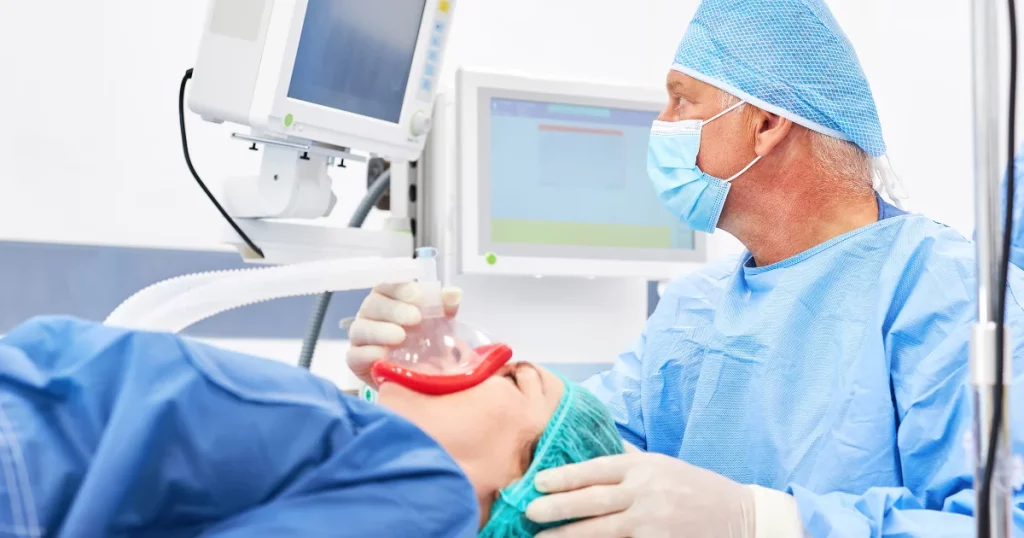
Patient monitors operate on a sophisticated interplay of technology to deliver real-time insights into a patient’s physiological well-being. Let’s dive into the mechanics of how these crucial medical instruments work:
1. Data Acquisition
The process begins with sensors strategically placed on the patient’s body. These sensors, specialized for various physiological parameters, capture raw data. For instance, ECG electrodes detect electrical signals from the heart, a blood pressure cuff gauges vascular pressure, and a pulse oximeter measures oxygen saturation in the blood.
2. Signal Processing
The captured raw signals are then transmitted to the central processing unit (CPU) of the patient monitor. The CPU acts as the computational powerhouse, analyzing and processing the incoming data.
3. Algorithmic Calculations
The CPU employs sophisticated algorithms tailored for each parameter being monitored. These algorithms perform intricate calculations, such as determining heart rate from ECG signals or interpreting the oxygen saturation percentage from pulse oximetry.
4. Display Generation
The processed data is synthesized into comprehensible information. The display screen of the patient monitor then showcases this information in a visually accessible format. This can include numerical values, waveforms, and trend graphs.
5. Real-time Monitoring
Medical patient monitors operate in real-time, providing a continuous stream of updated information. Healthcare professionals can observe dynamic changes in vital signs and respond promptly to deviations from normal ranges.
6. Alarming Mechanism
Patient safety is paramount, and monitors include an alarming mechanism. Parameters are preset to specific ranges, and if readings deviate, the monitor triggers alerts. Alarms notify healthcare providers of potential issues, prompting timely intervention.
7. Power Management
Patient monitors incorporate a reliable power supply mechanism. This often includes mains electricity as the primary source and a battery backup for continuity during power disruptions.
8. User Interaction
The user interface, whether touchscreen or button-based, facilitates interaction with the monitor. Healthcare professionals can configure settings, navigate menus, and access additional functionalities.
9. Printing and Data Output
Patient monitors may include a built-in printer or data output ports. This feature enables healthcare providers to obtain hard copies of vital sign trends or export data for documentation and analysis.
Understanding how patient monitors work unveils the intricate orchestration behind the scenes, where technology converges to provide actionable insights for healthcare professionals. This continual evolution in monitoring technology contributes significantly to enhancing patient care and safety across diverse healthcare environments.
Importance of Vital Signs
Monitoring vital signs stands as a fundamental and indispensable practice. Vital signs, encompassing key physiological parameters, serve as vital indicators of a patient’s overall well-being. Medical patient monitors play a key role in this process, continuously tracking and providing real-time data on these crucial signs. Let’s delve into the paramount importance of monitoring vital signs through medical patient monitors:
1. Early Detection of Abnormalities
Monitoring vital signs allows healthcare professionals to detect deviations from normal ranges at an early stage. This early detection is instrumental in initiating prompt interventions to address emerging health concerns before they escalate.
2. Comprehensive Patient Assessment
Vital signs, including heart rate, blood pressure, respiratory rate, temperature, and oxygen saturation, offer a comprehensive snapshot of a patient’s physiological status. The collective data aids healthcare providers in forming a holistic understanding of the patient’s health.
3. Timely Response to Deterioration
Changes in vital signs can signify deteriorating health or response to treatment. Medical patient monitors facilitate timely response by instantly alerting healthcare teams to abnormal readings. This rapid decision-making is particularly critical in critical care settings.
4. Customized Treatment Plans
Individualized patient care is enhanced through the customization of treatment plans based on real-time vital sign data. Monitoring allows healthcare providers to adjust medications, interventions, and other therapeutic measures according to the patient’s evolving condition.
5. Prevention of Complications
Continuous monitoring aids in the identification of potential complications before they manifest clinically. By addressing issues in their early stages, healthcare providers can mitigate risks and prevent adverse outcomes.
6. Postoperative Monitoring
After surgical procedures, medical patient monitors play a crucial role in postoperative care. They enable healthcare teams to monitor vital signs during the recovery phase, ensuring a smooth transition from surgery to waking and beyond.
7. Chronic Disease Management
Patients with chronic conditions benefit from continuous vital sign monitoring. It allows healthcare providers to manage chronic diseases effectively, optimizing medication regimens and lifestyle interventions based on real-time physiological data.
8. Improved Clinical Outcomes
The regular monitoring of vital signs contributes to optimized care pathways. By tailoring interventions based on real-time data, healthcare providers can work towards achieving improved clinical outcomes for their patients.
In essence, the importance of monitoring vital signs through patient monitors extends far beyond the routine measurement of physiological parameters. It embodies a proactive and vigilant approach to patient care, where technology converges with medical expertise to safeguard and enhance the well-being of individuals under medical supervision.
Patient Monitor Alarms
Patient monitor alarms play a crucial role as the vigilant notes that signal changes in a patient’s condition. These alarms, sounding off for various vital sign deviations, are essential components of patient safety. Let’s dive into the world of patient monitor alarms, understanding their significance, types, and how healthcare professionals interpret and respond to these audible signals.
1. The Concert of Vigilance
Medical Patient monitors are equipped with alarms to provide real-time surveillance of vital signs. This continuous monitoring ensures that any deviations from the preset parameters trigger an immediate alert.
2. Types of Patient Monitor Alarms
- High and Low Threshold Alarms: These alarms activate when a vital sign, such as heart rate or blood pressure, surpasses preset upper or lower limits.
- Technical Alarms: Signal technical issues with the monitor itself, such as sensor detachment or battery status.
- Arrhythmia Alarms: Indicate irregularities in the heart’s rhythm, prompting swift attention.
- Apnea Alarms: Triggered when the monitor detects a pause in respiratory activity, vital for addressing potential respiratory distress.
3. Visual and Auditory Alerts
- Visual Display: Medical patient monitors often feature a visual display of alarms, providing healthcare providers with a quick overview of the triggered alerts.
- Auditory Alerts: Alarms are accompanied by distinctive sounds, varying in urgency based on the severity of the deviation. This audible element ensures that healthcare teams can respond promptly, even in busy clinical environments.
4. Understanding Alarm Fatigue
While alarms are vital, excessive or false alarms can lead to alarm fatigue—a phenomenon where healthcare providers become desensitized to the alerts. Striking a balance to avoid unnecessary alarms is crucial for maintaining the effectiveness of the alarm system.
5. The Dance of Response
Healthcare professionals are trained to respond promptly to alarms. The immediacy of response can be critical, especially in situations where swift intervention can prevent complications or deterioration.
6. Alarm Customization
Medical patient monitors allow for customization of alarm settings, considering individual patient needs and specific care scenarios. This customization ensures that alarms are both sensitive to changes and specific to the patient’s condition.
7. Multidisciplinary Communication
Patient monitor alarms serve as a means of communication among healthcare team members. They signal changes that require collaborative decision-making and intervention, fostering a multidisciplinary approach to patient care.
In the symphony of patient care, monitor alarms harmonize with the expertise of healthcare professionals to create an environment of constant vigilance. Striking the right chords involves not only the precision of technology but also the nuanced interpretation and timely response of the healthcare team. As patient monitors continue to evolve, the aim remains steadfast: to enhance patient safety through proactive surveillance and responsive care.
Considerations in Choosing Medical Patient Monitors
Selecting the right patient monitor is a critical decision in the orchestration of healthcare, influencing the quality of patient care and clinical outcomes. Healthcare providers navigate through a symphony of options, considering various factors to ensure that the chosen patient monitor aligns seamlessly with the needs of both clinicians and patients. Here are key considerations in the melodic process of choosing patient monitors:
1. Patient Population and Acuity
Different patient populations have distinct monitoring needs. Neonatal, pediatric, and adult patients may require monitors with specific features catering to their age group. Additionally, the acuity of patients, ranging from standard care to critical care, influences the monitor’s required capabilities.
2. Vital Signs Monitoring
Assess the range and accuracy of vital signs that the monitor can capture. A versatile patient monitor should encompass parameters such as heart rate, blood pressure, respiratory rate, temperature, and oxygen saturation (SpO2).
3. Ease of Use
An intuitive and user-friendly interface is paramount. Healthcare professionals should be able to navigate the monitor’s functions efficiently, minimizing the risk of errors and optimizing workflow.
4. Customization and Expandability
Patient monitoring needs can vary. Choose a monitor that allows for customization based on the specific requirements of different patients and clinical scenarios. Consider monitors with expandable capabilities to accommodate future advancements.
5. Connectivity and Data Integration
Assess the monitor’s connectivity options and its compatibility with hospital information systems (HIS) or electronic health records (EHR). A monitor that facilitates seamless data integration enhances the efficiency of information flow in a healthcare setting.
6. Alarming and Notification Features
Evaluate the alarm capabilities of the patient monitor. It should provide timely and clear alerts without causing alarm fatigue. Customizable alarm settings enable healthcare providers to tailor alerts to individual patient needs.
7. Battery Life and Power Options
Consider the monitor’s battery life and the availability of alternative power options. Reliable power sources are crucial to ensure continuous monitoring, especially during power outages or when transferring patients.
8. Portability and Mounting Options
Depending on the clinical setting, portability and mounting options become crucial. Monitors with flexibility in placement, such as wall mounts or portable units, offer adaptability in various care environments.
9. Durability and Maintenance
Medical patient monitors should be designed for durability, considering the demanding healthcare environment. Assess the ease of maintenance and the availability of support services for prompt issue resolution.
10. Regulatory Compliance
Ensure that the selected patient monitor complies with relevant regulatory standards and certifications. This ensures that the device meets established safety and performance criteria.
11. Cost and Value
While considering the cost of patient monitors, assess the overall value they provide. Investing in monitors that align with clinical needs, offer longevity, and contribute to improved patient outcomes represents a sound investment.
Choosing patient monitors involves orchestrating a harmonious blend of technological capabilities, clinical requirements, and user preferences. The selected monitors become integral components in the symphony of patient care, contributing to the melody of safety, accuracy, and efficient healthcare delivery. As technology evolves, healthcare providers continue to seek instruments that resonate with the ethos of patient-centered care and clinical excellence.
Final Words
This ultimate guide provides a comprehensive overview of medical patient monitors, from their fundamental principles to the latest advancements. Whether you’re a healthcare professional or someone interested in healthcare technology, this guide serves as a valuable resource in understanding the critical role patient monitors play in modern healthcare.

